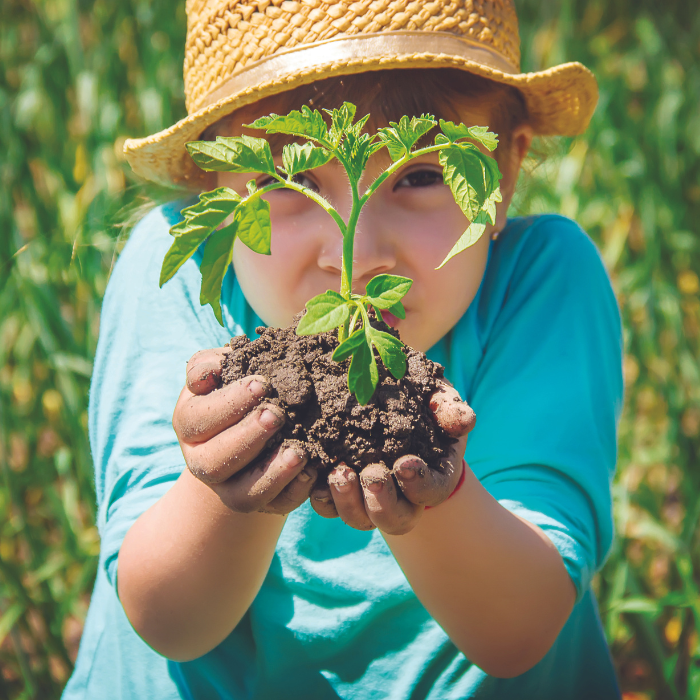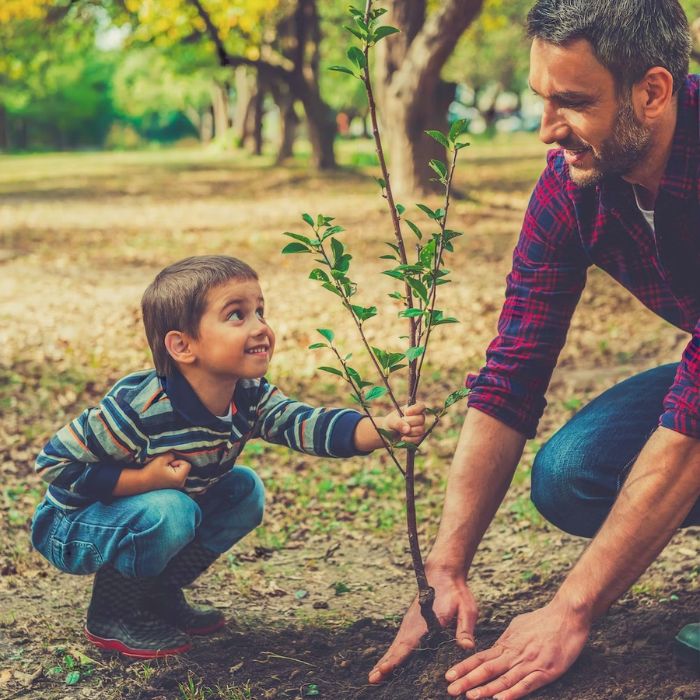
This is the perfect time of year to celebrate nature’s bounty and get your kids involved in some good, old-fashioned harvesting. Be it picking or pickling, there’s much fun and learning to be had.
It seems only natural to celebrate harvest time. Late summer is the best time of year, with hot days and fresh cooling nights. The vegetable garden is bursting with zucchini, pumpkin vines are taking over and fruit trees are heavy with sweet globes of goodness. As the season progresses,
new things come into fruit – strawberries are followed by apricots, peaches, and plums; grapes come into their own as the frosts start.
In our busy, ever-increasingly urban lives, we are becoming more and more disconnected with how nature provides for us, and how the seasons change. The convenience of supermarkets means that some children think that’s where food actually comes from – how it gets there is a mystery. Importing fruits and vegetables from overseas means the seasons have become blurred into one.
Involving your children in the planning, caring and harvesting of a garden not only allows you to spend quality time together outside as a family, but it helps them understand the cornucopia wonder of nature.
gardening teaches us
- Where food comes from – potatoes grow underground and flowers turn into fruit.
- How nature works – from planting a seed to watching it unfurl its first leaf, first flower, first fruit.
- The changing seasons – as late summer berry fruits give way to autumn’s pumpkins and potatoes.
- Patience as they wait for vegetables to grow.
- Responsibility as they care for their garden, and a huge sense of achievement when they harvest the results!
Studies have shown that children who help grow their own food are more likely to eat it. As parents, there is nothing more satisfying than looking at your dinner plate and knowing you’ve provided most of that food for your family. And vegetables from your own garden just taste better. They have been picked fresh and eaten fresh – not stored in a refrigerated truck.
Gardens can be hard work, and no more so than at harvest time. When things in the garden are really humming, you can find yourself a little overwhelmed. While potatoes and carrots can stay in the ground until you are ready to harvest, fruits like corn and tomatoes must be picked when ripe – but not over-ripe – and either eaten or frozen right away to maintain their starches and flavour.
Janet Luke on her website ‘green urban living’ has this advice:
“The secret to a successful vegetable garden is to plan it correctly and design it in a way to fit our busy lifestyles. We might want to grow our own vegetables, but if it can’t fit into our already busy lives it will be the first thing to be put into the ‘too hard basket’.”
Harvest time is also sharing time. When your garden is at its peak, there’s nothing nicer than giving extra produce away to family and friends. If you are handy in the kitchen, get the children chopping to turn excess vege into relishes and pickles – great gifts. Even if you are not handy, jam-setting sugar guarantees success every time. (Note: jam-making does present several burning hazards, so is best done with older children.)
Some communities hold vege swap meets – where growers come together to put all their excess produce on a table, and then take away anything else that takes their fancy.
no space or time for your own garden?
- Sprouts can grow nicely on a windowsill; strawberries, blueberries or cherry tomato plants can grow in large pots on a patio.
- Community gardens are making a real comeback and are often a great use of wasteland, for example, beside railway lines. The load of caring for the garden is shared, as is the harvest!
- Or support local growers by shopping at farmers’ markets.
- And of course, there is always foraging. I have fond memories as a child heading down the wild piece of bush at the bottom of our hill to gather wine berries. These days, serious foragers can share good sources of wild foods with the help of Google Maps: search for ‘New Zealand Fruit and Food Share Map’ for a nationwide spread. Children love the adventure of collecting wild foods, and it’s a good lesson in respect too, as it’s important to leave some behind for others.
harvest festivals
Little River Pumpkin Festival: 23 April
two grape stomping winery festivals
Croatian Harvest Festival, Soljans Estate Winery:
ages and stages
under-5s
- Playing with dirt and mud is a good ‘first experience’ for infants.
- Once they are old enough to eat strawberries, sit them somewhere where they can help themselves!
- Cherry tomatoes and sugarsnap peas are great toddler-size vegetables to harvest.
- Children love to help with sowing seed trays; it takes things down to mini-scale. Get them their own little watering can to water seedlings.
- Visit a pick-your-own berry farm or apple orchard.
5- to 8-years
- Ask for your own patch of garden to care for. Good fast-growing choices are lettuce and beetroot. Potatoes are pretty failsafe and make for a great digging treasure hunt. Herbs provide fragrant leaves and flowers to attract pollinators – another one of nature’s lessons in action.
- Make a big batch of vegetable soup and enjoy with some yummy bread for dipping. Chop veggies, stir and experiment with adding different herbs and flavours.
- Plant some herb or cress seeds indoors, nurture and harvest for sandwiches.
- Look at a globe to see how far food has travelled to get to your cupboard.
9- to 12-years
- Talk to your teachers about establishing a vegetable garden in your school grounds.
- Set up a produce stall with your harvest as a fundraiser to buymore seeds.
- Get involved in harvesting, chopping and pulping to make jams and relish. (Kids will be amazed when they see how much sugar goes into jam or tomato sauce.)
- Scavenger hunt in the supermarket – while mum shops, ‘collect’ countries by looking at the labels to find where foods come from.
Sarah Mankelow has worked in conservation for over 15 years, and is the mother of two nature-loving children.










